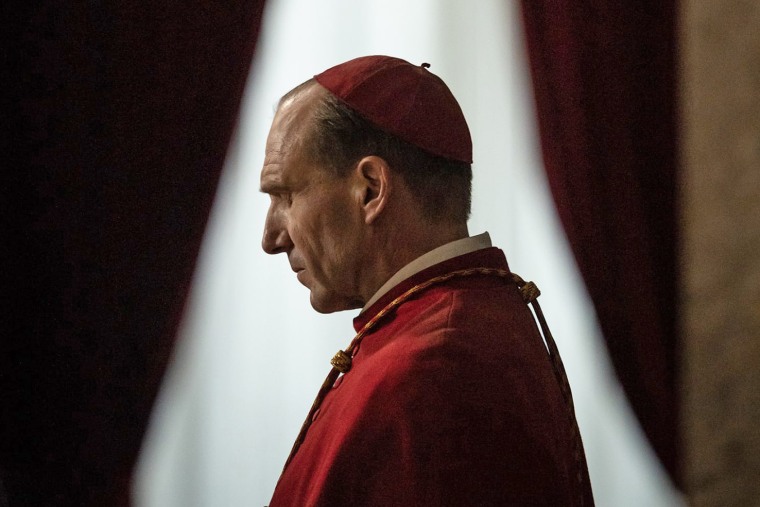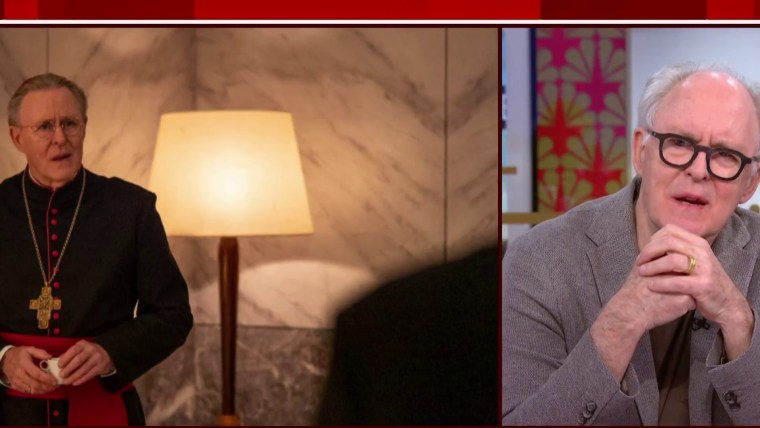UPDATE (March 2, 2025, 10:48 p.m. ET): On Sunday night, “Anora” was named this year’s best picture at the Academy Awards. "Conclave" ultimately came away with only one Oscar, for best adapted screenplay.
There’s a reason why Catholicism is one of the most misunderstood — and the most portrayed — religions in the movies.
Ritual.
“Conclave,” an Academy Award nominee for best picture, based on the 2016 novel by British writer Robert Harris, hits all the right notes as it illuminates the arcane world of the Vatican and its rituals surrounding a pope’s death. The surprise of the movie will be a shock to some viewers, but in other ways, the message behind the surprise is an important critique of the church and its traditions. But more on that in a moment.
“Conclave,” based on the 2016 novel by Robert Harris, illuminates the arcane world of the Vatican and its rituals surrounding a pope’s death
Director Edward Berger’s film about the process of electing a pope has elicited many conversations about the cinematography, the acting and whether the ritual of the conclave is portrayed correctly. At the same time, there’s the real-life story playing out in Rome as the 88-year-old Pope Francis battles a serious respiratory illness. Given the optics, it would be poetic if the movie were to win best picture.
The biggest reveals in “Conclave” center around sex. While that’s the last thing a conclave should be concerned with, human sexuality, and the choices about how to deal with it, are front and center. Its exploration of sex is where the genius and the banality of the movie resides.
The movie asks viewers to consider the role that sexuality and gender have had in clerical life even as it falls prey to damaging tropes about both.
Spoiler alert: If you haven’t watched the movie and want to keep the suspense, you should quit reading here.

While the moral conundrums facing the cardinals as they meet to choose the next pope are real, the two major plot twists of the movie involve a cardinal who has fathered a child and a secretly intersex cardinal.
Cardinal Adeyemi, an African cardinal who is a strong contender for the papacy, is revealed to have had a child with a young nun. That makes him ineligible because he broke his vow of celibacy. This isn’t as far-fetched as it might seem. One of the bigger issues for the Catholic Church is African priests who secretly marry. Many marry because they are in competition to attract members in predominately Muslim areas — or simply don’t believe priests should be celibate. So having this scene in the movie simply instantiates the issue, but it doesn’t provide any explication about why this is a problem. Nor does it give much agency to the nun who put her child up for adoption because of the shame involved. Which, of course, she bore alone.
A second, bigger, revelation involves the discovery of the cardinal of Kabul, Vicente Benitez, who’d been secretly appointed by the pope.
A second, bigger, revelation involves the discovery of the cardinal of Kabul, Vicente Benitez, who’d been secretly appointed by the pope and is invited to enter the conclave.
A paragon of Catholic virtues serving people in the most dangerous areas of the world, the cardinal is an intersex person, which is only discovered after a scheduled medical procedure. The pope rejects the cardinal’s attempt to leave the priesthood and instead assigns Benitez to be the archbishop of Kabul. In a turn of events, this cardinal is elected to be the next pope.
On the surface, this plot twist is a masterstroke. After all, given the discussion about whether there was a female pope, this development (which is not in the book) is a challenge to the Catholic Church to think about its relationship to gender and LGBTQ people, and to think about how a religious organization riddled with sexual abuse might redeem itself by embracing a pope who is male and female.

But the secret cardinal was also assigned to one of the most dangerous places in the world, Afghanistan, perhaps to disappear or die. This is a pointed commentary on the church's culture of secrecy.
While I loved “Conclave” for the cinematography, the intrigue, the complex personalities and the predictably conservative Italian cardinal’s outburst, I remain troubled. After all, sex, and the denial of it, is so much a part of the church. But even in art, it seems hard to imagine the church capable of accepting the truths of human sexuality and gender and capable of acknowledging how keeping those secret can kill you.
We need a bigger imagination, one that pushes the church to stop rejecting people who are fully sexual human beings and fully committed to a life of service and faith.

